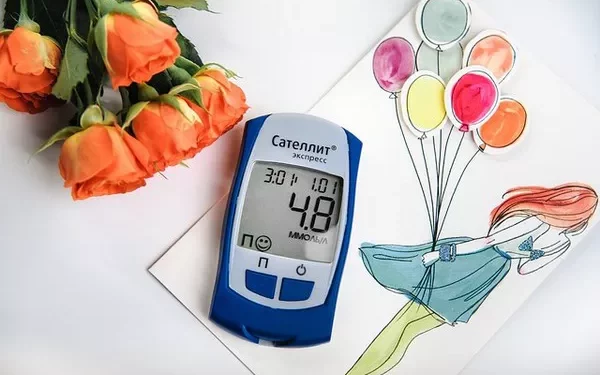Hemoglobin A1c (HbA1c) is one of the most widely used blood tests for assessing long-term glucose control in individuals with diabetes. This marker provides valuable insight into the average blood sugar levels over a span of two to three months, making it an essential tool in diabetes management. Unlike random blood glucose tests or fasting glucose tests, which offer a snapshot of blood sugar levels at a single point in time, the HbA1c test offers a more comprehensive picture of how well a person’s blood sugar has been managed over a longer period.
Understanding the HbA1c level is crucial for individuals diagnosed with diabetes, as well as for healthcare providers working to optimize diabetes care. This article explores the mechanics behind HbA1c, how it is measured, its role in diabetes management, and the clinical guidelines that help physicians interpret the results.
What Is Hemoglobin A1c (HbA1c)?
Hemoglobin A1c, or simply HbA1c, is a form of hemoglobin, the protein in red blood cells that carries oxygen throughout the body. The “A1c” portion refers to a specific biochemical form of hemoglobin that is chemically attached to glucose molecules. Over time, as blood glucose levels rise, more glucose binds to hemoglobin, forming HbA1c. The amount of HbA1c in the blood is directly proportional to the average blood glucose level during the lifespan of the red blood cells, which is typically about two to three months.
The process of glucose binding to hemoglobin is non-reversible and continuous, making HbA1c a reliable marker for assessing long-term blood glucose control. The higher the average blood glucose level, the higher the HbA1c percentage.
Why Is HbA1c Important in Diabetes Management?
For people with diabetes, maintaining blood glucose levels within a target range is crucial for preventing complications. Elevated blood glucose can lead to a variety of long-term complications, including:
-
Cardiovascular disease
-
Kidney damage (diabetic nephropathy)
-
Nerve damage (neuropathy)
-
Eye problems (retinopathy)
-
Increased risk of infections and wounds that do not heal
Regular monitoring of HbA1c levels helps healthcare providers assess how well a person with diabetes is managing their blood sugar over time. A stable or well-controlled HbA1c level indicates that the person’s blood sugar has been consistently in the target range, while higher levels signal that adjustments in treatment, diet, or lifestyle may be necessary.
The HbA1c test is also useful because it reflects the cumulative effect of glucose levels, rather than being influenced by day-to-day fluctuations in blood sugar. It provides a more holistic view of diabetes management.
How Is HbA1c Measured?
The HbA1c test is a blood test that measures the percentage of hemoglobin in the blood that has glucose attached to it. There are several methods used to measure HbA1c, including:
High-Performance Liquid Chromatography (HPLC): This is the gold standard method for HbA1c testing, providing accurate and reliable results.
Immunoassay: This method involves using antibodies to detect the presence of HbA1c in the blood. While widely used, it is not as precise as HPLC.
Capillary Electrophoresis: This method is used to separate and identify different types of hemoglobin based on their charge. It is also reliable but less commonly used in routine testing.
Point-of-Care Devices: Many devices available for home testing provide HbA1c results, but they tend to be less accurate than laboratory methods.
The test is typically performed in a laboratory setting, where a healthcare provider will take a small sample of blood from a vein or via a fingerstick. In some cases, healthcare providers may use point-of-care devices that can provide near-instant results.
What Is a Normal HbA1c Level?
The HbA1c level is expressed as a percentage. The normal range for HbA1c is typically between 4% and 5.6% in individuals without diabetes. However, the target range may vary slightly depending on the specific guidelines used by a healthcare provider. For individuals with diabetes, an HbA1c of less than 7% is generally considered optimal for preventing complications, although individual targets may be adjusted based on the person’s age, comorbidities, and treatment goals.
Here is a general breakdown of HbA1c levels:
Normal: Less than 5.7%
Prediabetes (At risk for diabetes): 5.7% to 6.4%
Diabetes: 6.5% or higher
It is important to note that these guidelines are just general targets, and healthcare providers may adjust them based on an individual’s specific needs, health condition, and lifestyle.
Understanding the Clinical Significance of HbA1c Levels
The clinical interpretation of HbA1c levels is central to the management of diabetes. Here’s what different levels typically signify:
Normal HbA1c Levels (Below 5.7%)
Individuals with an HbA1c level below 5.7% are considered to have normal blood glucose regulation.
It is important to note that some people with normal HbA1c levels may still be at risk for diabetes, particularly if they have other risk factors, such as obesity or a family history of diabetes.
Prediabetes (5.7% to 6.4%)
Individuals with HbA1c levels in the range of 5.7% to 6.4% are considered to have prediabetes, a condition where blood glucose levels are higher than normal but not yet high enough to be classified as diabetes.
People with prediabetes are at an increased risk of developing type 2 diabetes, heart disease, and stroke. Lifestyle interventions such as changes in diet, exercise, and weight loss are often recommended to prevent the progression to type 2 diabetes.
Diabetes (6.5% or Higher)
An HbA1c level of 6.5% or higher on two separate occasions is typically used to diagnose diabetes.
For individuals with diabetes, the goal is to keep HbA1c levels as close to normal as possible to minimize the risk of complications. This is usually achieved through a combination of lifestyle changes (diet, exercise), blood sugar monitoring, and medication.
Factors That Can Affect HbA1c Levels
Several factors can influence HbA1c results, and it is important to be aware of these when interpreting the test:
Anemia and Other Hemoglobin Variants: Conditions such as sickle cell anemia, thalassemia, or other hemoglobinopathies can interfere with the HbA1c test, leading to inaccurate results. In these cases, alternative methods may be used to monitor blood glucose levels.
Kidney Disease: Individuals with kidney disease may have a higher HbA1c level due to the decreased ability of the kidneys to filter glucose.
Age: HbA1c levels tend to rise with age, even in individuals who do not have diabetes. This may be due to changes in the body’s ability to regulate glucose and the natural aging process.
Hemolysis: Excessive destruction of red blood cells, known as hemolysis, can lead to falsely low HbA1c readings because the lifespan of red blood cells is shortened.
Pregnancy: During pregnancy, particularly in the second and third trimesters, HbA1c levels may be lower, which may not reflect the actual blood glucose control in pregnant women. Gestational diabetes may be diagnosed using other tests like the oral glucose tolerance test (OGTT).
Blood Loss and Transfusions: Individuals who have had recent blood loss or blood transfusions may have altered HbA1c levels, which may not accurately reflect their blood glucose control over time.
Using HbA1c to Monitor Diabetes Management
For individuals diagnosed with diabetes, HbA1c testing is a critical tool for monitoring long-term blood glucose control. Unlike daily fingerstick blood glucose tests, which provide a snapshot of blood sugar at a specific time, HbA1c reflects the average blood sugar levels over two to three months. This allows healthcare providers to assess whether a patient’s overall blood glucose control is within target ranges.
People with diabetes should typically have their HbA1c tested at least twice a year if their blood glucose levels are stable and their treatment plan is well-managed. Those who are struggling to control their blood glucose or who are experiencing frequent changes in their treatment regimen may need to have their HbA1c tested more frequently, such as every three to six months.
The Impact of HbA1c on Diabetes Treatment
The HbA1c level provides essential information for adjusting diabetes treatment. If a patient’s HbA1c is above the target range, healthcare providers may recommend changes to the patient’s diabetes management plan, including:
Medication Adjustment: This may include starting, stopping, or changing the dose of medications such as insulin, oral hypoglycemics, or other diabetes medications.
Dietary Modifications: A dietitian or nutritionist may help the individual develop a personalized meal plan that supports stable blood glucose levels.
Exercise Recommendations: Regular physical activity is a key component of diabetes management. Exercise helps to lower blood glucose levels and improve overall health.
Weight Loss: Losing excess weight is often one of the most effective ways to improve blood glucose control in individuals with type 2 diabetes.
Limitations of HbA1c
While HbA1c is an invaluable tool for monitoring diabetes, it does have some limitations:
Not Suitable for Short-Term Monitoring: HbA1c reflects average blood glucose levels over the past 2 to 3 months, so it is not ideal for assessing day-to-day fluctuations or responding to acute changes in blood glucose.
Variability Across Populations: As mentioned earlier, conditions like anemia or kidney disease can interfere with the accuracy of the HbA1c test.
Does Not Measure Insulin Sensitivity: HbA1c only provides information about blood glucose levels, not about insulin resistance or how effectively the body is using insulin.
Conclusion
Hemoglobin A1c is a critical test in the management of diabetes, providing an accurate representation of a person’s average blood glucose levels over an extended period. By regularly monitoring HbA1c levels, healthcare providers can make informed decisions about treatment adjustments and guide individuals in achieving optimal glucose control.
While HbA1c is an indispensable tool for long-term diabetes management, it is important to recognize its limitations and complement it with other monitoring strategies. With the right approach, individuals with diabetes can maintain healthy blood sugar levels and minimize the risk of long-term complications, leading to better quality of life and improved overall health.
Related topics:
What Affects Your Glucose Level

























